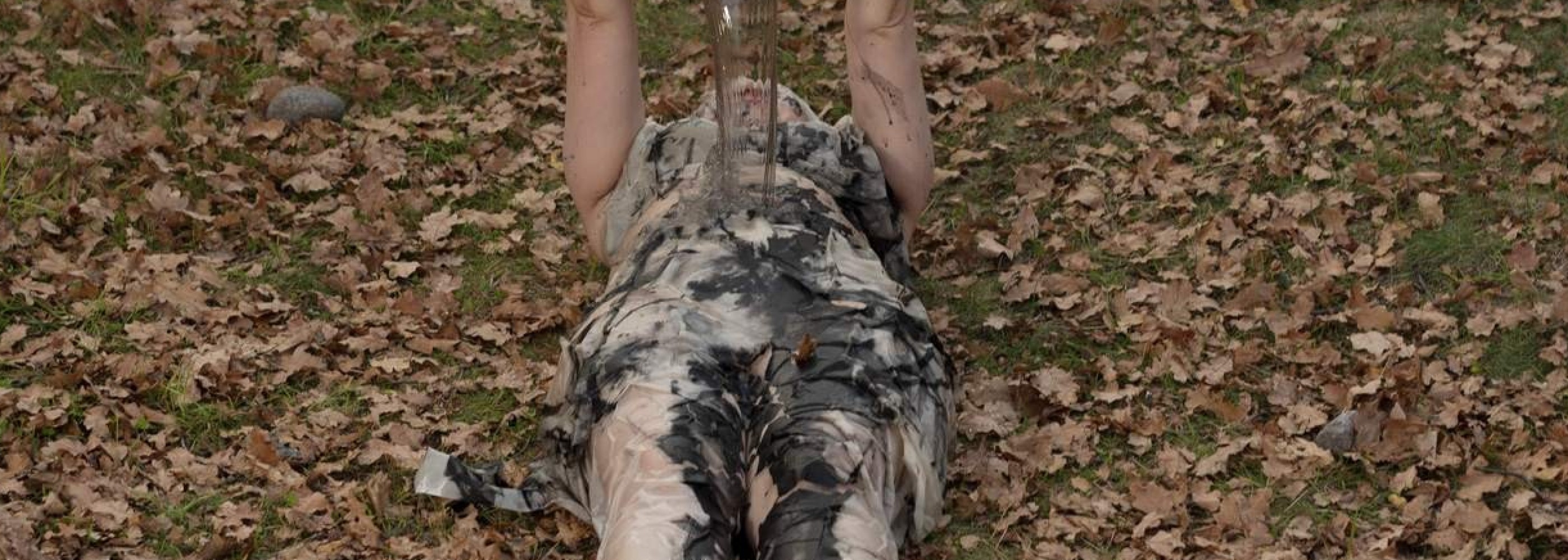

On September 7, 2024, Li Xinmo presented her latest work in the form of a performance at the Långholmen Art Center in Sweden. This performance, titled "A Tree", explores the complex interplay between the human body and nature. The foundation of this work is the symbolic depiction of a tree, which in many cultures stands for life, growth, and connection. In this performance, Li Xinmo employs traditional Chinese materials such as rice paper, ink, and brush, establishing a deep connection to her cultural heritage. Yet, instead of leaving these artworks confined to paper, the artist allows the tree to merge with her body.
At the beginning of the performance, Li Xinmo paints a tree structure with ink on a large piece of rice paper spread on the forest floor. This first part of the performance is reminiscent of classical Chinese ink painting, where the process is not just about the motif but also the meditative and precise execution of brushstrokes. The depiction of the tree itself carries deep symbolism: the roots represent the human feet, the trunk represents the body, the branches represent the arms, and the crown of the tree represents the head. This metaphor creates a direct analogy between humans and nature, with the tree acting as a mirror of the human body.
The performance reaches its climax when Li Xinmo lays the painted image of the tree over her body. By wetting the paper with water from a bowl, the ink begins to dissolve, and the lines of the tree drawing gradually fuse with her skin. The artwork, previously confined to paper, becomes part of her. The tree, representing life and nature, merges with the human body, symbolizing a unification of both. At this moment, the performance is no longer just about painting; it addresses the deeper question of how humanity is embedded in the natural world and how fluid the boundaries between the two truly are.
Philosophically, Li Xinmo draws on Daoist ideas, particularly the concept of the "harmony between humans and nature." In Daoist tradition, humans are not seen as separate from nature but as integral parts of it. By merging her body with the tree, the artist visualizes this ancient wisdom and makes it tangible for a modern audience. The water that connects the image to her body symbolizes life itself and acts as the medium through which the boundary between body and artwork dissolves. This fluid unity highlights the fragility of life and the interplay between humanity and nature.
The use of traditional Chinese materials and techniques adds additional cultural depth to the performance. Rice paper and ink, which have been used for centuries as media for precise, controlled art, are utilized here in a new way. The combination of classical materials with a modern, body-centered performance practice creates a dialogue between past and present, tradition and innovation. Li Xinmo transforms the art of painting by applying the creative process directly to her own body, thus redefining the role of the artist as an active participant in both art and nature.
Li Xinmo's "A Tree" is far more than a simple depiction of nature or an aesthetic experiment. It is a profound reflection on humanity's connection to the environment, to art, and to the fundamental forces of life. Through the symbolic fusion of body and tree, she raises existential questions about humanity's relationship to nature, inviting the audience to reflect on their own role in this endless cycle of life.